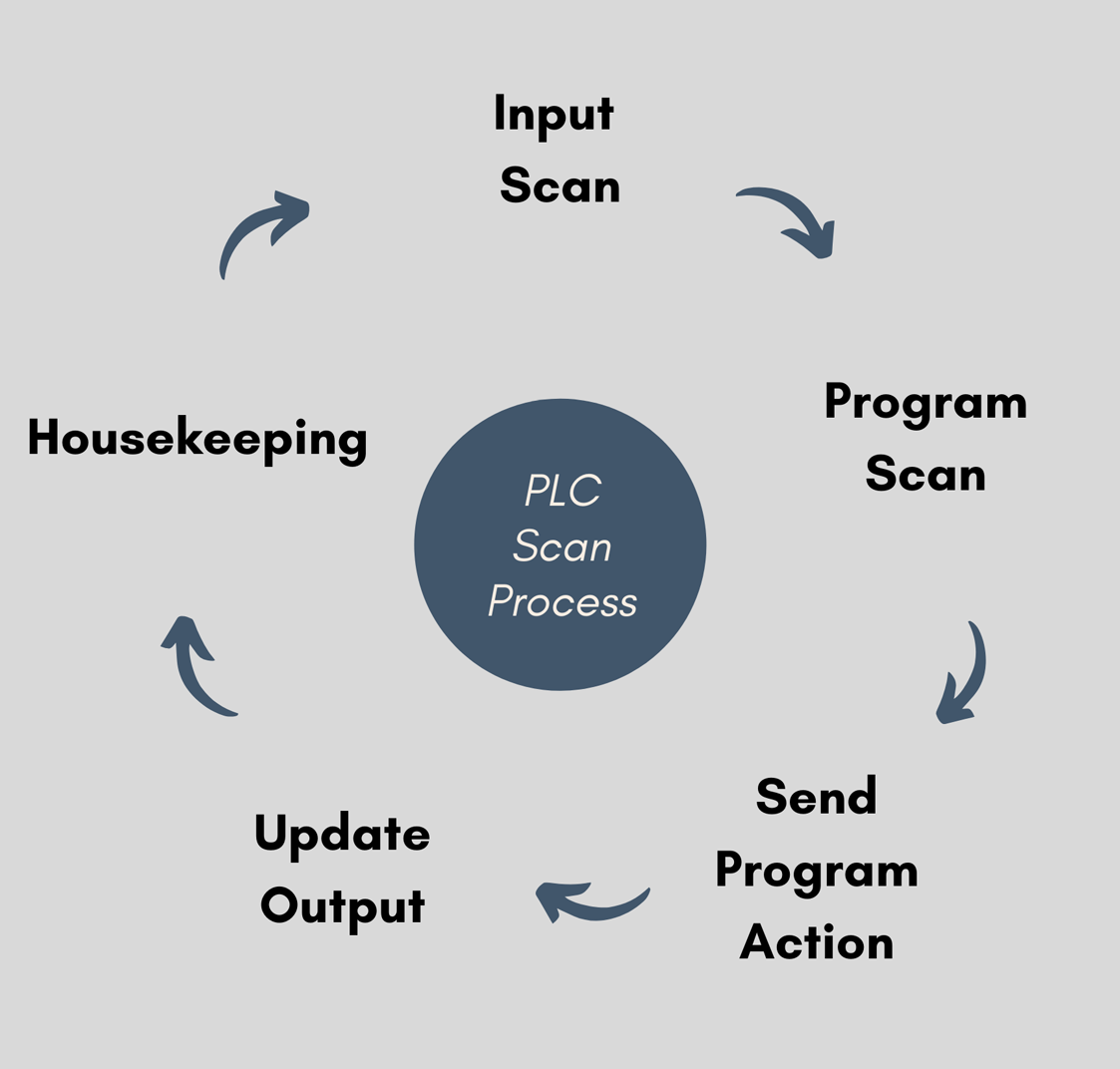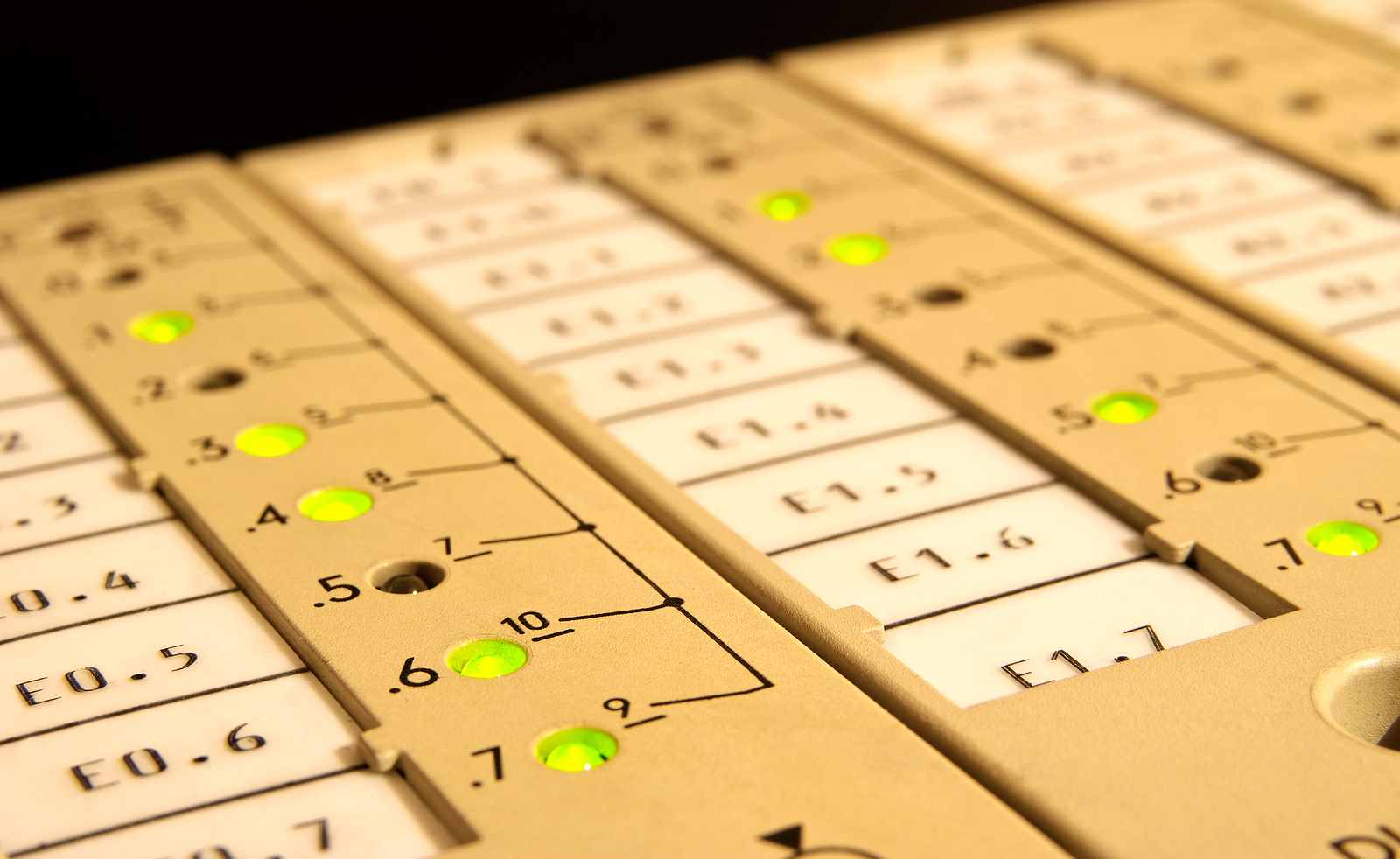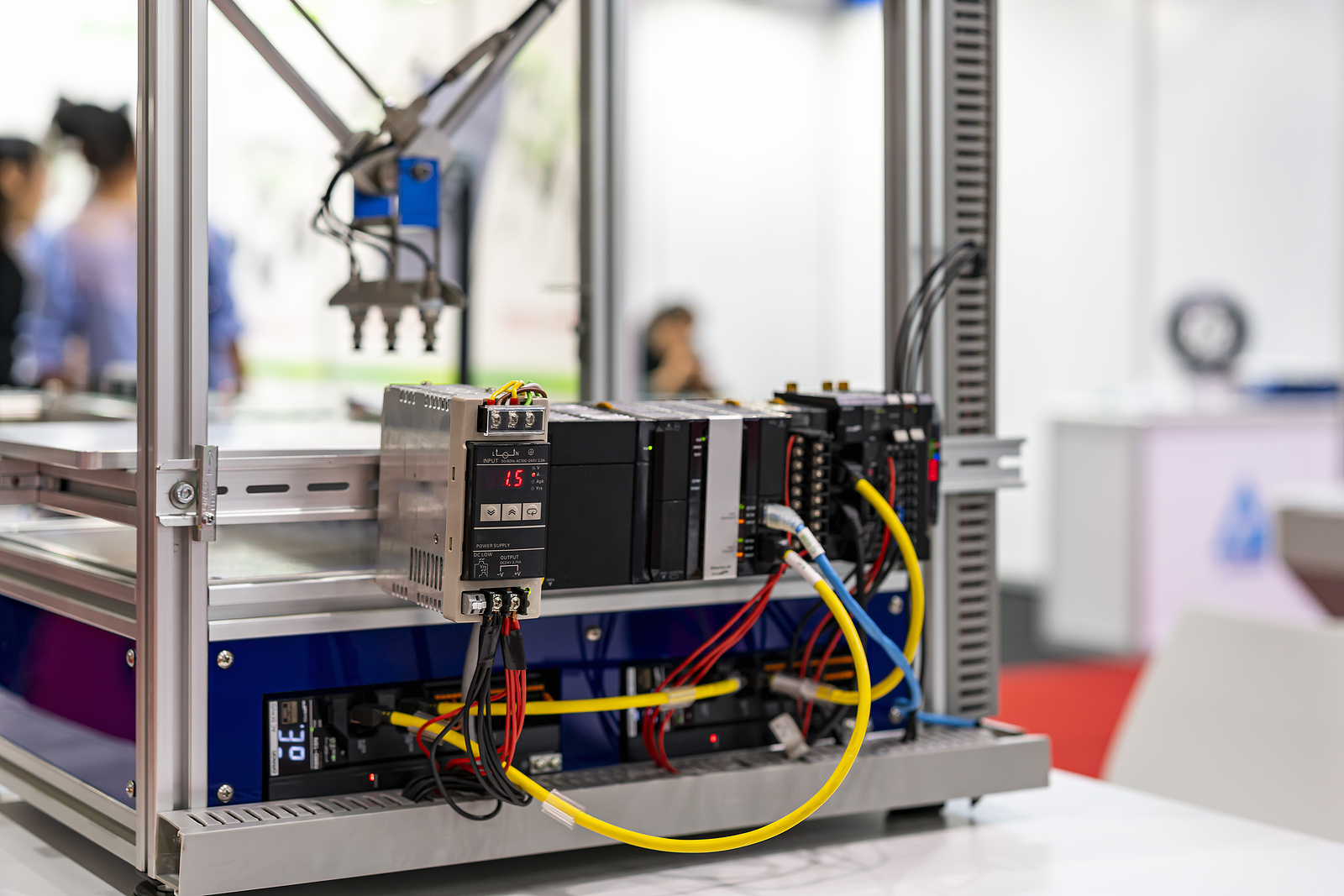Nearly everything around you is made in a manufacturing facility. These facilities combine the power of human hands and machinery to produce the consumer goods you want. With consumer demand comes the need for not only reliability, but also repeatability. As a result, manufacturers look to automate production processes as much as possible and with automation comes PLCs.
What are PLCs?
PLC stands for Programmable Logic Controller. In short, PLCs are computers connected to machinery to automate and monitor the machinery and its operations. To do this, PLCs scan input devices from the machinery, process what that input means, and send reactionary (programmed) functions to output devices. This process creates the desired operation in the machinery. Input devices include sensors, switches, thermometers, etc. while output devices can include valves, pumps, fans, and alarms, among others.
For a simple example, think of a light switch and a light bulb. When the switch is flipped (input), a PLC would realize that a light needs to turn on. The PLC sends a programmed action to the lightbulb (output) and the lightbulb turns on.

Another simple example (specific to manufacturing) would include a temperature sensor (input device) reading that the machine is operating at levels that are too hot. The PLC then analyzes that input and determines that a fan (output device) needs to turn. The PLC program pushes out a programmed command to the fan which then turns on and cools the temperature to an acceptable level.
In addition to scanning the inputs, programs, and outputs, the PLC also performs what’s called housekeeping. This step is where the PLC consistently monitors itself and internal diagnostics among other items.
The PLC scan process is continuous and cyclical in nature. It’s a never-ending loop.
PLC Scan Process

PLC Programming
When explained, PLCs seem simple. It’s an “if this, then that” equation. However, it’s complicated work to determine all of the potential “if this, then that” occurrences in a machine, especially in high-tech or complex machinery. Writing this “if this, then that” PLC program takes careful thought, an in-depth understanding of the machinery (which can include all mechanical, electrical, pneumatic, and/or hydraulic systems and components), an in-depth understanding of the desired machine operations and knowledge of every input and desired output. Once these details are attained, the program is ultimately a long list of “if this input, then that output,” but a complicated list.

How is this done? By a PLC Programmer or a Controls Engineer.
PLC Programmers
Not only do PLC Programmers write the long list of code for machine operations according to inputs and outputs, but they’ll also create and design schematics, install (or assist) in the installation of the PLC (remember, it’s essentially a computer connected to the machine), and also test the PLC and the program that’s written to ensure it’s operational.
Interested in being a PLC Programmer? A great place to start is at school. Employers prefer master’s degrees in electrical engineering, computer science or other similar programs. However, relevant experience would include a bachelor’s degree in either of those studies with hands-on PLC experience, as well. If you’re already working in manufacturing, make it clear that you’re interested in PLC programming or want to be a PLC Programmer. Often times, PLC Programmers become PLC Programmers through on-the-job training.
Are you a PLC Programmer? Join the PMG team for the opportunity to travel and explore new places, learn new techniques, create flexibility in your schedule, and work with some of the greatest manufacturers in the US. Apply Here!








